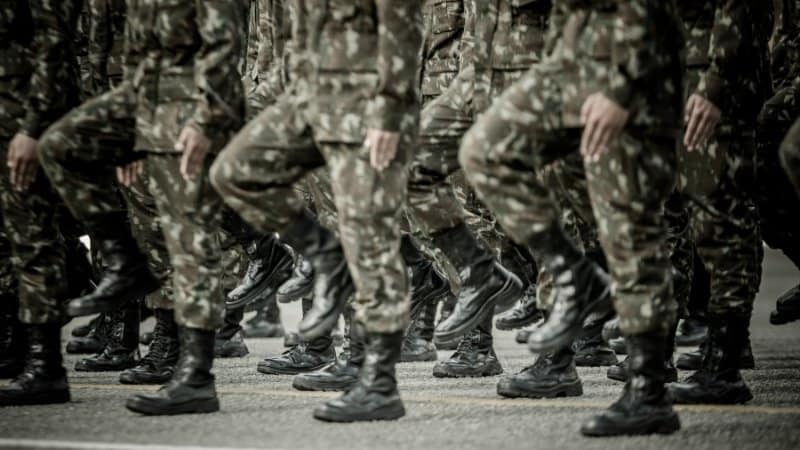How Long Do You Have to Be in the Military to Get Benefits?

For many people starting their military journey, one of the first questions is when the promised benefits actually begin. Military service opens the door to education benefits, health care, and long-term retirement security, but the timeline for receiving these benefits is not the same for everyone.
Active duty service members, military spouses, and surviving family members all fall under different eligibility requirements. Some benefits may be available after only a short period of active service, while others require years of commitment. In certain cases, a service-connected disability or death in the line of duty can change the rules entirely.
This article uses the most current 2025 guidelines to explain how eligibility works across the major categories of VA and DoD programs. Stay with us as we break down what you need to know before counting on military benefits.
Contents
1. Benefits for Active and Former Service Members
Military Retirement Pension
A retirement pension is one of the most valuable rewards of long-term military service. For most service members, the standard requirement is 20 years of active duty service. Completing this period provides lifetime retirement income that equals about 40 percent of the average of their highest 36 months of active duty pay.
For many military retirees, that steady income helps cover healthcare benefits, living expenses, and the transition into civilian life.
There are a few exceptions where retirement can be reached earlier:
- 15 years of service may qualify if a member leaves under a force reduction program.
- Late-entry officers may be granted retirement under special rules.
While these exceptions are less common, they show that the length of service needed to receive benefits depends on specific eligibility requirements. A service member who retires after 15 years will not see the maximum benefit, but they still carry financial stability into civilian life.
The Blended Retirement System, introduced for anyone with a Date of Initial Entry into Military Service of January 1, 2018, or later, changed how benefits build over time. Under BRS:
- Members receive a smaller pension if they complete 20 years.
- They can contribute to the Thrift Savings Plan, with the government adding matching contributions.
- Even those who serve 8 to 10 years leave with TSP savings that can help with education benefits, retirement, or other goals in civilian life.
This creates a clear difference between retirement eligibility and vesting into partial benefits. Full pensions belong only to those who complete the full 20 years of active duty.
But every active duty service member covered by BRS still gains something lasting through their TSP, ensuring their service leads to financial value no matter how long they remain in uniform.
VA Health Care Eligibility
Access to medical treatment is one of the most sought-after veterans’ benefits, but eligibility depends heavily on when and how long someone served. Unlike military retirement pensions that focus on active duty years, VA health care benefits apply primarily to military veterans.
For those who enlisted after 1980 or entered active duty after 1981, the rule is clear:
- They must complete at least 24 continuous months of active duty service, or
- Serve the entire active duty period for which they were called.
Veterans who entered service before 1980 are not held to the 24-month requirement, which often makes access to VA health care easier for older generations of military members.
Recent updates expanded eligibility in an important way. All veterans who meet discharge requirements and were exposed to toxins or other hazards while serving in combat zones from Vietnam and the Gulf War to Iraq, Afghanistan, and post-9/11 deployments now qualify for VA health care. Veterans and their family members can review these updated rules and apply directly through the Department of Veterans Affairs.
There are also exceptions that allow access without the two-year minimum. A service member discharged early due to a service-connected illness or injury, a hardship separation, or an early-out program may still receive VA health care benefits. These cases show how the VA considers more than just length of service and recognizes the impact of circumstances on eligibility.
Severance Pay or Service Gratuity
Not every military career ends with a retirement ceremony after decades of service. Some service members leave earlier, often because of medical issues or changes in force structure. In these situations, the reward is not a lifetime pension but a one-time financial payment known as severance pay or service gratuity.
This benefit usually applies to members who served between five and fifteen years. While it does not carry the same long-term security as retirement benefits, it provides immediate financial support during the transition back to civilian life.
For example, an active duty service member who is honorably discharged after eight years due to a service-connected illness may qualify for severance pay to help cover living expenses while seeking medical treatment or new employment.
The key difference is that severance pay is a lump sum, not a recurring income. For some, it acts as a bridge between military service and civilian opportunities, offering breathing room to adjust after leaving the armed forces. This makes it an important part of the larger picture of military benefits, especially for those whose careers end sooner than expected.
Benefits for Military Spouses and Former Spouses
Military benefits do not stop with the service members themselves. Spouses and even former spouses may qualify for valuable health care and financial support, but the rules are very specific.
Understanding these requirements is especially important during divorce or separation, when eligibility depends on the length of both the marriage and the service.
TRICARE Eligibility: The 20/20/20 Rule
The 20/20/20 rule is considered the gold standard for former spouses. To qualify:
- The service member must have at least 20 years of credible active duty service.
- The marriage must have lasted 20 years.
- There must be a full 20-year overlap between the marriage and the military service.
When all three conditions are met, the unremarried former spouse is entitled to lifetime TRICARE health benefits, commissary and exchange privileges, and, in many cases, a share of retirement pay.
This creates long-term security even after divorce, as long as eligibility is documented and verified through DEERS and the appropriate ID card office.
TRICARE Eligibility: The 20/20/15 Rule
Not all couples meet the strict overlap of the 20/20/20 rule. That is where the 20/20/15 rule comes in. In this case:
- The service member must have 20 years of service.
- The marriage must have lasted 20 years.
- At least 15 years of the marriage must overlap with the service.
This rule provides one year of TRICARE health care coverage after the divorce is finalized. It does not include lifetime commissary or exchange privileges, but it gives the former spouse valuable time to arrange new health care coverage during a difficult transition.
Both rules apply only to unremarried former spouses, and only when the proper documentation is in order. Without DEERS verification, benefits cannot be granted, making careful record-keeping just as important as meeting the eligibility requirements themselves.
Post-9/11 GI Bill Transfer to Spouse
Education benefits can be life-changing, not only for service members but also for their families. The Post-9/11 GI Bill includes a powerful option: transferring unused benefits to a spouse. This opportunity can ease the cost of college or technical schools, but strict rules determine who qualifies.
To make the transfer, all of the following conditions must be met:
- At least six years of active duty service must be completed.
- The service member must agree to serve four additional years, reaching a total of ten.
- The spouse must be properly registered in DEERS at the time of transfer.
- The request must be completed while the member is still serving on active duty.
According to the Department of Veterans Affairs, transfers can be revoked if the service member separates early, making continued service essential.
The exact amount of entitlement is decided when the transfer is approved. This may include:
- Coverage for tuition and fees
- A monthly housing allowance while enrolled in school
- A stipend for books and supplies
When used strategically, this benefit can give a spouse the chance to pursue higher education, professional certification, or career advancement without the burden of heavy student loans. It turns years of military service into an investment for the entire family’s future.
Survivor Benefits and Time-Based Eligibility
Dependency and Indemnity Compensation (DIC)
When a service member dies, the impact on their family is not only emotional but also financial. Survivor benefits exist to provide support in these moments, and one of the most significant is Dependency and Indemnity Compensation, or DIC.
Unlike many other military benefits, there is no minimum number of years of military service required for eligibility.
For a surviving spouse to qualify, certain conditions must be met:
- The marriage lasted at least one year, or
- The couple had a child together, or
- The marriage occurred before discharge or within 15 years of the veteran’s separation if the death is service-connected.
DIC is paid monthly by the Department of Veterans Affairs, and these payments are tax free. This makes them especially valuable for surviving spouses and family members who may be facing unexpected living expenses. Importantly, DIC is separate from any disability compensation or other veterans’ benefits that the deceased may have been receiving during their lifetime.
This distinction ensures that families receive ongoing support even after service members or military retirees pass away, offering stability during an otherwise uncertain time.
Survivor Benefit Plan (SBP)
Financial planning in the military does not end with retirement; for many families, it extends to what happens after a service member passes away. The Survivor Benefit Plan was created to ensure that surviving spouses are not left without income.
If a retiree elected SBP at the time of retirement, or if a service member died while still on active duty, the surviving spouse is entitled to monthly annuity payments.
A key change makes this benefit even more meaningful today. As of 2023, SBP payments are no longer reduced when a spouse is also receiving DIC. This means families can now receive both benefits without the offset that once limited their financial support. For many survivors, that combination provides a stronger safety net to help with everyday costs.
The exact requirements for SBP depend on whether the service member retired or died while still serving, but in either case, payments continue as a steady source of income. These annuities are also adjusted for cost-of-living increases, ensuring their value keeps pace with inflation and continues to support family members long after the initial loss.
Quick Comparison Chart for Service Length Requirements
| Benefit Type | Minimum Service for Member | Spouse / Ex-Spouse Eligibility |
|---|---|---|
| Military Retirement Pension | 20 years of active duty (15 years in limited cases) | Not applicable |
| VA Health Care | 24 continuous months, or full active duty obligation | Not applicable |
| TRICARE 20/20/20 Rule | 20 years of credible service | Marriage of 20 years with a full 20-year overlap |
| TRICARE 20/20/15 Rule | 20 years of credible service | Marriage of 20 years with at least 15 years overlapping service (1 year coverage only) |
| Post-9/11 GI Bill Transfer | 6 years completed, plus agreement to serve four more | Must be registered in DEERS at the time of transfer |
| Dependency and Indemnity Compensation (DIC) | No minimum service requirement | Marriage of at least 1 year, or child with a veteran, or marriage before/within 15 years of discharge if death was service-connected |
Need Proof of Military Service for Benefit Applications?
Every benefit, from survivor compensation to TRICARE coverage, begins with one essential step: proving military status. Missing this step can slow down applications or even block access to the support you and your family deserve.
The Servicemembers Civil Relief Act Centralized Verification Service (SCRACVS) makes that process simple. Using official Department of Defense data, SCRACVS delivers fast and compliant active duty military verification trusted by courts, lenders, and government agencies. Whether you need instant confirmation or a certified affidavit, your request is handled securely and without delays.
FAQs
How long do I have to serve to transfer GI Bill benefits to my spouse?
To transfer Post-9/11 GI Bill benefits, a service member must complete at least six years of active duty service and agree to serve four more years, making a total of ten. The spouse must be registered in DEERS at the time of transfer, and the request has to be submitted while the member is still on active duty. Once approved, the entitlement may cover tuition, books, and even a monthly housing allowance, offering valuable educational assistance tied to years of military service.
Can a spouse qualify for TRICARE after a divorce?
Yes, but the rules are very specific. Under the 20/20/20 rule, a former spouse qualifies for lifetime TRICARE health care benefits, commissary use, and exchange privileges if there were 20 years of marriage, 20 years of active duty service, and a 20-year overlap. Under the 20/20/15 rule, the former spouse receives one year of TRICARE coverage when there are 20 years of marriage with at least 15 years overlapping service. In both cases, the spouse must remain unremarried and verified in DEERS.
Is there a minimum time of marriage required for DIC?
Dependency and Indemnity Compensation (DIC) usually requires a marriage lasting at least one year. If the couple had a child together, this time requirement does not apply. In situations where the veteran’s death was service-connected, eligibility also exists if the marriage took place before discharge or within 15 years of separation. These rules ensure that surviving spouses and family members of eligible veterans receive monthly tax-free payments from the Department of Veterans Affairs.
What if a service member serves less than 20 years?
A service member who leaves before reaching 20 years of active duty typically does not qualify for full retirement benefits. Instead, they may be entitled to severance pay or a service gratuity, especially in cases of medical separation or force restructuring. Under the Blended Retirement System, active duty members who serve fewer years still vest into the Thrift Savings Plan, ensuring that even without a pension, they leave with financial growth that can be carried into civilian life.
Can a surviving spouse receive both DIC and SBP?
Yes. Since 2023, the offset between Dependency and Indemnity Compensation (DIC) and the Survivor Benefit Plan (SBP) has been fully eliminated. This means surviving spouses can now receive both monthly tax-free DIC payments and SBP annuity payments adjusted for cost of living. Together, these benefits provide stronger financial stability for family members after the loss of a service member or military retiree, ensuring that survivors are better supported.





